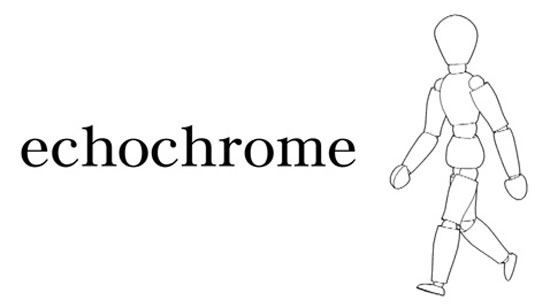You might remember the game from when we salivated over it back at TGS. The game looked like an utter mindf*ck, and everyone thought it would be a great addition to the PS3’s online library, filling it out just a little more. Of course, the excitement surrounding Echochrome died out, with other games garnering attention from just about everyone on the ‘net. While walking around Yodobashi Camera last Monday, I was forcefully reminded that Echochrome was coming out the next day by a rather large display. And not only that, there’s a PSP version!
Having decided against lugging my giant black behemoth of love with me to Japan, I was thankful that my PSP was at hand, and that UMDs are blissfully region-free. I stayed true to my promise, and bought the game the very next day, eager for some puzzle-poundin’ action – something that I had sorely been missing since Brad Rice’s Block-Droppin’ Hootenanny.
As soon as I jumped into things, I realized that puzzle games, along with rhythm games, were one of my weaker genres. Yet, like Linde, I enjoy being bent over and spanked by games that I have no business playing. In the range of puzzle games, Echochrome is on the far end from Professor Layton, forcing you to use the right side of your brain as much as you can to solve these puzzles. If you enjoyed NEVES, then Echochrome will tax your mind even more.
Echochrome (PS3, PSP [Reviewed])
Developed by Japan Studio
Published by Sony Computer Electronics Japan
Released on March 17, 2008
The game follows a few basic rules, but can be summarized as “whatever you can see, works.” Gaps in pathways, obstructions, and anything else that might be in the way of the mannequin can disappear if you just change the perspective so that something is blocking it. Similarly, if you can line up platforms so it seems as though they’re touching, then they will become joined, so the mannequin can walk across them as though it were perfectly natural. Finally, with potholes, which the mannequin can fall through, and jump pads, which fling him up in the air, the destination can be manipulated in mind-bending fashions. Platforms at the bottom can be made to look as though they’re at the top. In other words, you can make the mannequin fall up.

Depending on how you want to play the game, Echochrome can end up being a collection of mini-games to play between train stops, or something that you sit down with for two and a half hours and work at. There are three play styles: Solo, Pair, and Others. In Solo mode, you try to get the mannequin to walk through several goals, marked by shadows. In Pair mode, instead of there being any shadows, there are now two pairs of mannequins: one black and one white. You have to get each pair of like-colored mannequins to meet up with its mate, creating a grey mannequin, so that ultimately there is only one mannequin left standing. In Others mode, the mannequin has to reach all the goal shadows, while avoiding “others” – mannequins who will set back your mannequin’s progress.
The game lets you play all 96 stages’ three versions (Solo, Pair, and Others) at random in infinite mode, where you’ll get that blissful feeling of accomplishment just by completing the stage. Of course, if you have a compulsion to show that you’re better than everyone else, then you can play each stage individually in a time-attack mode. The stages can take anywhere from 15 seconds to four minutes, depending on how you play and how irritating the stages can get.
It’s taken me a while to get used to thinking in the ways Echochrome expects me to. Hell, even after going through a quarter of the game, I still wasn’t able to figure out the platforms right away. I feel that even after I’ve completed the final puzzle, I’ll still not be able to figure out the puzzles right away. Which, I suppose is a good thing – the game continues to be challenging, no matter how far you get into it. Each and every stage forces you to think a little differently, and think in ways you hadn’t before.

Thus, the stages walk that thin line between difficult and frustrating, which sometimes forced me to shut off the PSP and take a little break from the game because I only had one more goal to reach, but no visible way to get there. Then again, this could just be the fault of my weakness at the game. Thankfully, after each stage, I’ve had a feeling of satisfaction, so I haven’t had a point in time where I’ve not looked forward to a free moment to lay my hands on Echochrome. Plus, the game features a strings-based orchestral soundtrack, that while melodramatic at times, can be rather calming.
The game has a really casual feel to it that’s a pleasant change from pretty much all the titles that I have on the PSP. Echochrome has been really easy to get into, and even handing it to friends who don’t play games, they are able to get into it no problem. While it’s not on the same scale of appeal as Brain Age or Cooking Mama, Echochrome is in the same vein as a “must buy” title for the PSP. As of right now, the game doesn’t have a U.S. release date, but since all the instructions are in English, you can easily grab it through a Japanese PS3 account or by importing the game.
Final score: 8.5









